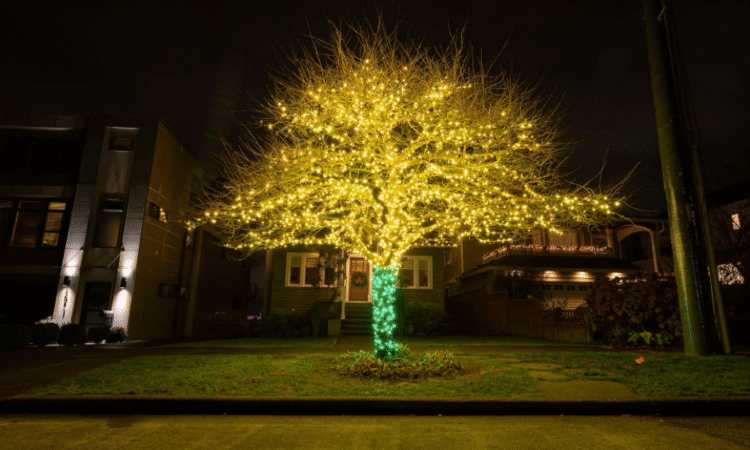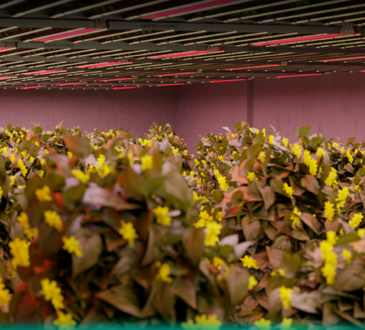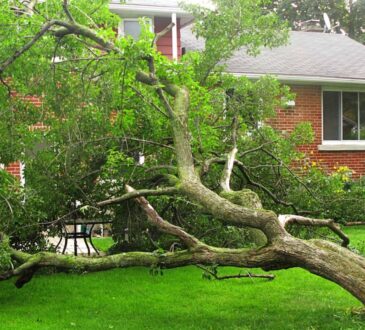
Seattle changes after dark. Yards that feel ordinary in daylight slip into shadow. Branches become outlines. Stones hold water that reflects the faintest light. Many people don’t think of their garden at night at all. They shut the door, close the blinds. Yet with landscape lighting Seattle, the whole space takes on another life.
Seeing What Was Always There
Light shows details. That crooked line of the fence. The moss between pavers. The curve of a tree trunk you barely noticed before. Suddenly it matters.
A small fountain looks plain in daylight. At night, under a single soft beam, the water shimmers. It feels deliberate. Even the smallest bush or plant becomes significant when the shadows shift around it.
It doesn’t have to be dramatic. A path with low lights looks different. It feels like a journey instead of a walkway. A spotlight aimed at branches makes them sway, almost like they are moving for you. You start to see the garden in layers—foreground, middle, background.
Safety, But Subtle
Seattle has wet nights, slick surfaces, hidden steps. A yard without light can be risky. But safety doesn’t need to glare. Small lights, low voltage, along the stairs. Motion sensors that only switch on when someone approaches. Enough to guide the way, not flood the yard.
The clever part is how safety lighting works without being obvious. Guests don’t notice the light itself, they just move more easily. You don’t worry about children running. You don’t stumble on the last step. The design is quiet, but the effect is strong.
Choosing Fixtures and Materials
Low-voltage lights are often enough. They’re simple. Efficient. LEDs last years and handle the damp weather. In Seattle, you need materials that resist rain: stainless steel, brass, or coated metals. Otherwise you replace them too soon.
Don’t settle for one type. A garden needs layers. Path lights at ground level. Uplights for trees. Hidden fixtures inside shrubs. Together they add depth. The yard feels larger, fuller.
Tone matters too. Warm lights give comfort. Cool lights feel sharp, clean. Too much warmth, and it looks heavy. Too much cool, and it feels cold. Balance keeps it natural.
DIY or Professional Touch
You can buy a kit. Place a few path lights yourself. It works. You’ll see an immediate difference. But professionals notice things that are easy to miss. Where the shadows fall. How bright one section should be compared to another. How one light changes the mood of the next.
Sometimes the best approach is both. You choose the look, they refine the placement. You bring personal taste. They bring technique. Together, the space feels intentional. Thought through, not random.
Changing the Way You Experience Outdoors
Light shifts perception. A small patio that feels plain in the day looks welcoming at night. A narrow yard looks wide. A simple bench under a halo of light feels like an invitation.
Season by season, the effect changes. Leaves in autumn glow differently when lit from below. Bare winter branches create patterns against the house wall. Spring flowers stand out under a subtle spotlight. Lighting doesn’t freeze your yard into one look—it evolves with time.
And it’s not just for guests. It’s for you. Quiet walks at night. Reading on the porch. Talking under trees while the wind moves shadows across the ground. Lighting creates places where you want to linger.
Conclusion
With landscape lighting Seattle, a garden shifts from background to part of your life. It isn’t only about making it pretty. It’s safety. It’s mood. It’s using the space after dark in ways you didn’t before.
Simple choices—fixtures, tones, placement—make the difference. You don’t need bright lights everywhere. You need balance. Depth. Layers that work together.
Even small changes matter. A spotlight here. A path light there. The effect grows. Your yard at night stops being hidden. It becomes something else entirely. A space to use, to notice, to enjoy.




